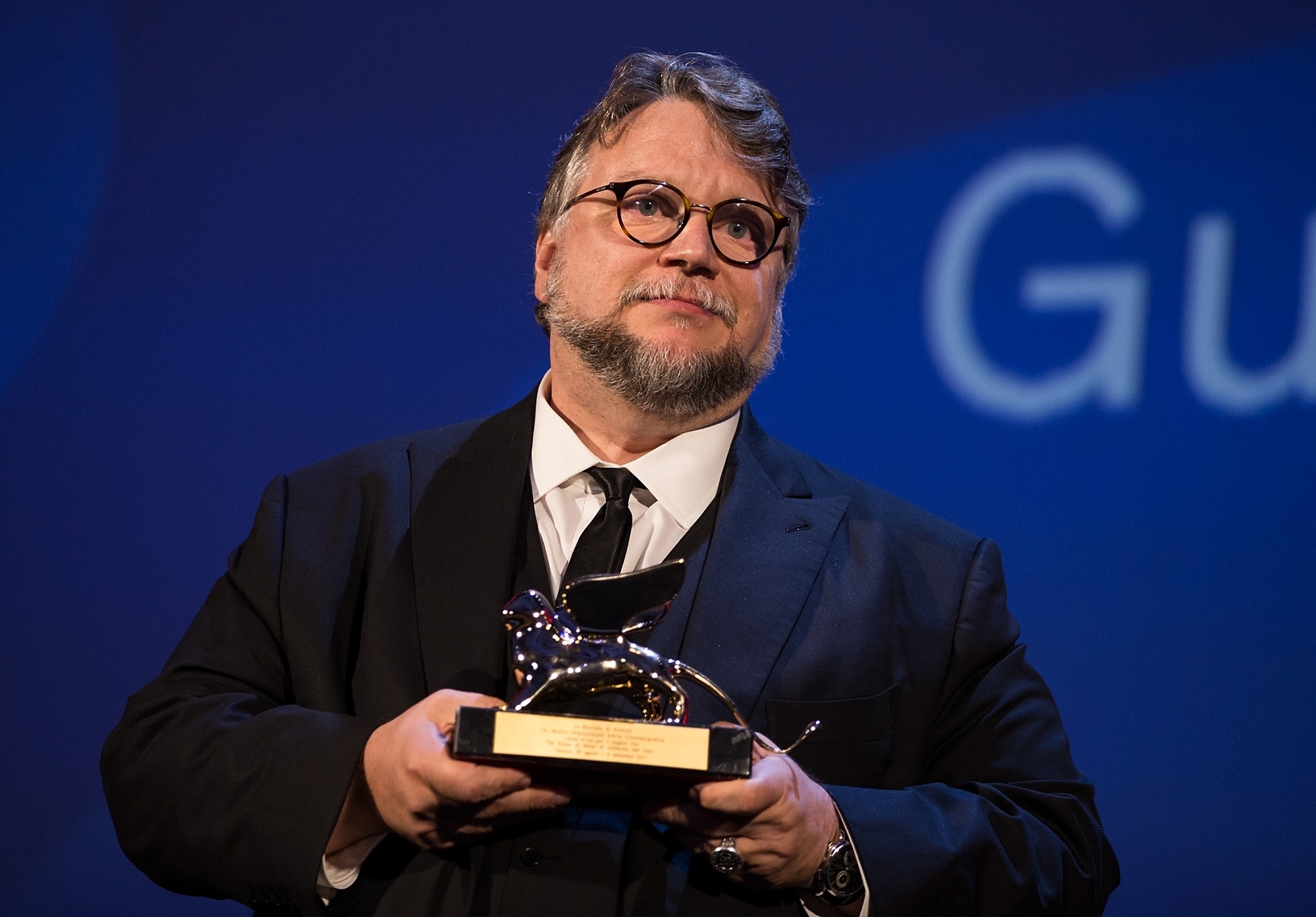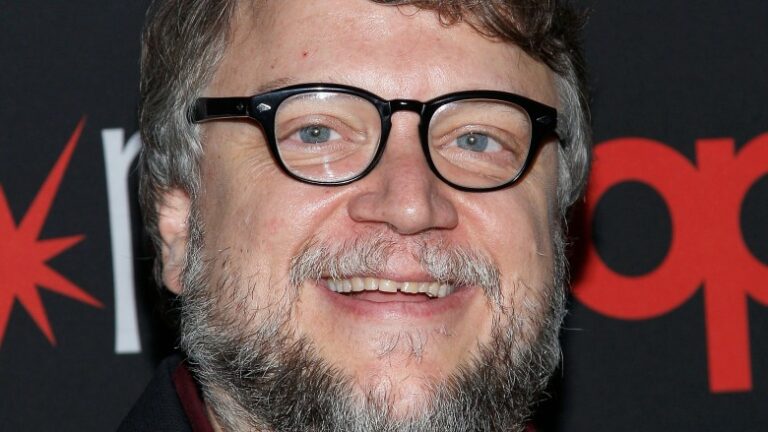Guillermo del Toro: A name that is synonymous with fantasy and storytelling in Hollywood. But did you know that the acclaimed director had to flee his home country of Mexico? In this blog post, we will explore the events that led to del Toro’s exile and delve into his departure from working on the highly anticipated film, The Hobbit. We will also discuss del Toro’s other notable works and answer some burning questions about his career, such as his involvement in Rise of the Guardians and why the original Fili left The Hobbit. But first, let’s start with the event that changed del Toro’s life forever: his father’s kidnapping in 1997.
The Exile of Guillermo del Toro: The Reasons behind His Departure
Guillermo del Toro’s decision to leave his homeland of Mexico was largely influenced by a traumatic event that occurred in 1997. The kidnapping of his father, Federico, and the subsequent 72-day hostage situation had a profound impact on the family. Despite the ransom being paid, the kidnappers were never caught, and the family’s money was never recovered. This event left del Toro feeling unsettled and fearful for the safety of his loved ones.
In response to the ordeal, del Toro and his family made the difficult decision to leave Mexico and move abroad. This was a significant move for the family, who had deep roots in their home country. However, the safety and well-being of their family was paramount, and they felt that leaving was the best course of action.
It is important to note that the kidnapping was not the only factor that contributed to del Toro’s decision to go into exile. As a highly creative individual, del Toro was also drawn to the prospect of working on international film projects. He recognized that by moving abroad, he would be able to collaborate with a wider range of talented individuals and pursue his passion for filmmaking on a larger scale.

🍿 Must Read Which episodes of Cabinet of Curiosities did Guillermo del Toro?
The Reason Behind del Toro’s Departure from The Hobbit.
Guillermo del Toro is known for his incredible work as a director and writer in the film industry. However, his involvement with The Hobbit was short-lived, leaving many to wonder why he left the project. Ultimately, it was a matter of scheduling conflicts that led to del Toro’s departure from The Hobbit.
Del Toro had originally signed on to direct and co-write the screenplay for The Hobbit, a highly anticipated film adaptation of J.R.R. Tolkien’s beloved novel. However, as the project evolved, it became clear that it would be a much larger undertaking than initially anticipated. Scheduling delays plagued the production, and this ultimately conflicted with the time that del Toro had allocated for the project.
Despite his best efforts, Guillermo del Toro had no choice but to step away from The Hobbit. This decision was undoubtedly a difficult one for him, given his passion for the source material and the excitement surrounding the project. However, he ultimately had to prioritize his other commitments and move on.
Following del Toro’s departure, Peter Jackson took over as director for The Hobbit. Del Toro was still credited as one of the screenwriters for the trilogy, which was released to critical and commercial success. Although it’s unclear what The Hobbit might have looked like under del Toro’s direction, it’s clear that his contributions to the project were significant and noteworthy.
The Accomplishments of Guillermo del Toro: A Master Filmmaker’s Legacy.
Guillermo del Toro is a renowned director, producer, and screenwriter born in Guadalajara, Mexico, on October 9, 1964. He is well-known for his unique style of blending horror and fantasy genres in his films, which usually have complex themes and emotional depth. Del Toro’s interest in horror and film dates back to his childhood, where he developed a fascination for monsters and scary stories. He started his career in the film industry as a special effects makeup artist, working on numerous Mexican films and TV shows.
Del Toro’s directorial debut was in 1993 with the Mexican horror film “Cronos,” which was a commercial and critical success. He continued to direct several successful Spanish-language films, including “The Devil’s Backbone” and “Pan’s Labyrinth,” which won three Academy Awards. He also directed the sci-fi action film “Pacific Rim” and the gothic romance film “Crimson Peak.”
In addition to directing, del Toro has also produced several films and TV shows, including “The Orphanage,” “Kung Fu Panda 2,” and “The Strain.” He has also been actively involved in the video game industry, serving as a creative director for the game “Death Stranding.”
Del Toro’s work has been recognized with numerous awards, including the Golden Globe for Best Director and the BAFTA Award for Best Original Screenplay. He is known for his attention to detail and his passion for the craft of filmmaking.

The Departure of Guillermo del Toro from Mexico – A Timeline
Guillermo del Toro, the renowned filmmaker and co-founder of Guadalajara film festival, left Mexico more than a decade ago. The reason for his departure from his homeland was a traumatic incident that occurred in his personal life. Del Toro’s father was kidnapped for ransom, which forced him to leave the country. Fortunately, his father was later rescued, but the experience left a deep impact on the filmmaker’s life, and he decided to move to the United States. Since then, he has not shot any films on Mexican soil. The last movie he directed in Mexico was the 2001 horror-drama, The Devil’s Backbone, which was widely acclaimed by the critics. Despite leaving his country, Del Toro continues to be a prominent figure in the Mexican film industry and remains an inspiration to many young filmmakers in the country.
>> Related – Why is Henry Cavill not playing The Witcher?
The involvement of Guillermo del Toro in Rise of the Guardians
Guillermo del Toro, the acclaimed Mexican filmmaker, has an impressive resume that includes not only directing and producing but also writing and acting. One of his notable works is “Rise of the Guardians,” an animated movie that tells the story of a group of mythical beings who join forces to protect the children of the world from the dark forces of Pitch Black. Del Toro served as one of the executive producers of the film, which was released in 2012.
As an executive producer, del Toro played a significant role in the development and production of “Rise of the Guardians.” He worked closely with the director, Peter Ramsey, and the producers to ensure that the film stayed true to its original concept and vision. Del Toro’s involvement in the project added a layer of depth and creativity that elevated the film from a simple children’s movie to a visually stunning and emotionally resonant work of art.
In addition to his work on “Rise of the Guardians,” del Toro has also produced a number of other highly acclaimed films, including “Pan’s Labyrinth” and “The Shape of Water.” His unique vision and storytelling style have earned him a devoted following among film enthusiasts and critics alike.
Overall, Guillermo del Toro’s involvement in “Rise of the Guardians” is a testament to his versatility and talent as a filmmaker. His contributions to the project helped to make it a memorable and beloved animated film that continues to entertain audiences today.
The Departure of Original Fili from The Hobbit: A Behind-The-Scenes Look
Rob Kazinsky’s sudden departure from the New Zealand production of The Hobbit left many fans wondering why the actor who was cast as the dwarf Fili had to leave. In a statement released by Kazinsky himself, he cited a “health issue” as the reason for his departure. It is not clear what the health issue was.
Kazinsky, who is best known for his role as womanising Sean Slater in the BBC1 soap Eastenders, was set to play the brother of Kili, portrayed by Aidan Turner, and the nephew of Thorin, played by Richard Armitage. The sudden exit of Kazinsky from the production was a shock to both fans and the production team.
Kazinsky’s departure meant that the filmmakers had to find a replacement quickly, and they eventually cast Dean O’Gorman in the role. While it was disappointing for fans to learn that Kazinsky would no longer be portraying Fili, they were excited to see O’Gorman take on the role and bring his own unique style to the character.

The Absence of Aragon in The Hobbit: Exploring the Reason Behind It.
It may seem obvious to some that Aragorn does not appear in J.R.R. Tolkien’s “The Hobbit,” but the question of why he is absent from the films is a common one. Actor Viggo Mortensen, who played Aragorn in “The Lord of the Rings” trilogy, revealed in an interview with “The Guardian” that he was asked by a producer if he would be interested in appearing in “The Hobbit” before filming began in 2008. However, Aragorn’s absence is not a surprise to fans of the book, as the character would not have been present during the events depicted in “The Hobbit.” Despite this, the decision to leave out such a beloved character was likely a difficult one for the filmmakers. Ultimately, the focus of “The Hobbit” was on Bilbo Baggins and the dwarves, and adding Aragorn’s storyline would have been a significant departure from the source material.
The Age of Fili at the Time of his Death in The Hobbit.
Fíli was a prominent character in J.R.R. Tolkien’s masterpiece, The Hobbit. As one of the thirteen dwarves who accompanied Bilbo Baggins on his quest for Erebor, Fíli played a pivotal role in the story. Born in T.A. 2859, Fíli was 82 years old when he met his unfortunate end in T.A. 2941. At such an age, Fíli was considered to be in the prime of his life, yet fate had other plans for him.
Despite his relatively short life by dwarf standards, Fíli left a lasting impression on the story and the readers. He was portrayed as a brave and loyal member of the company, who fought valiantly in the Battle of the Five Armies. His death, along with that of his brother Kíli, was a tragic loss for the company and a somber moment in the story.
It is worth noting that Fíli’s age is a testament to the longevity of dwarves. In the world of Middle-earth, dwarves were known to live for several centuries, and Fíli was still considered to be relatively young at the time of his death. This fact adds to the depth and richness of Tolkien’s world-building and helps to make the story feel more real and immersive.
In conclusion, Fíli’s age at the time of his death was 82 years old. He was a beloved character in The Hobbit and left a lasting impression on readers with his bravery and loyalty. His death, along with that of his brother Kíli, was a tragic moment in the story and a reminder of the perilous nature of their quest.
More to discover
Guillermo del Toro’s decision to leave Mexico was largely influenced by the traumatic experience of his father’s kidnapping in 1997. The event marked a turning point in his life, prompting him and his family to move abroad. While del Toro was initially set to direct The Hobbit, he ultimately left the project due to scheduling conflicts and creative differences. Despite this, he has gone on to produce and direct numerous successful films, including Rise of the Guardians. The original Fili’s departure from The Hobbit was due to personal reasons, while Aragon’s absence was a creative decision. With a successful career spanning over 25 years, del Toro has proven to be a talented and versatile filmmaker.
